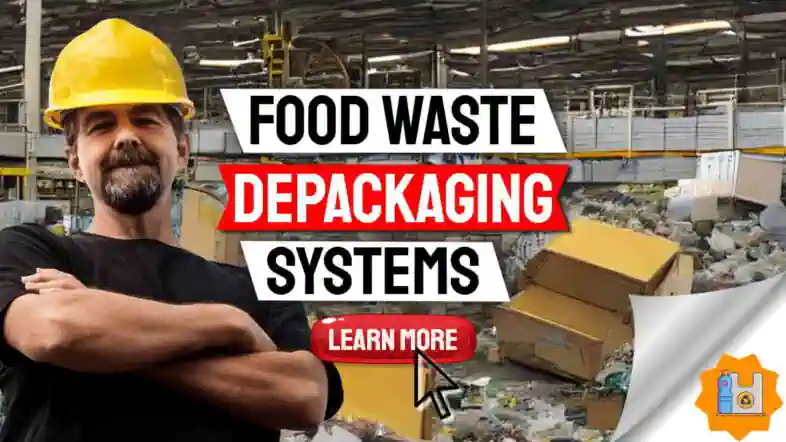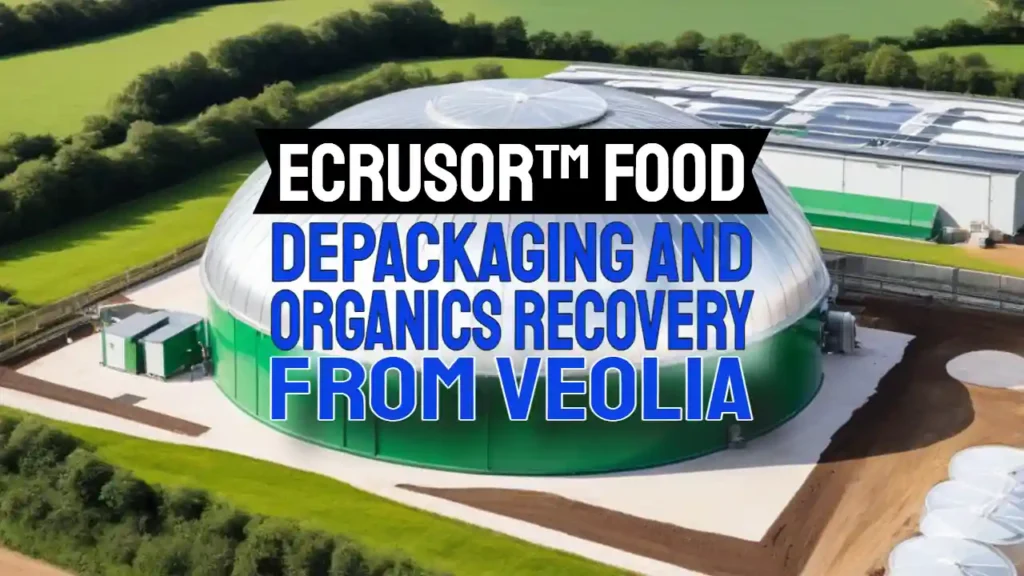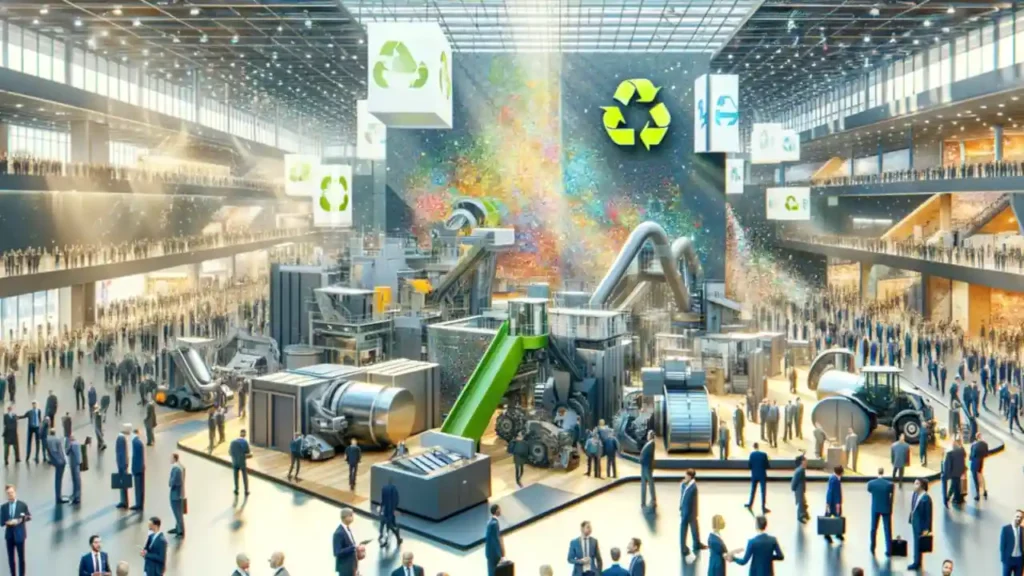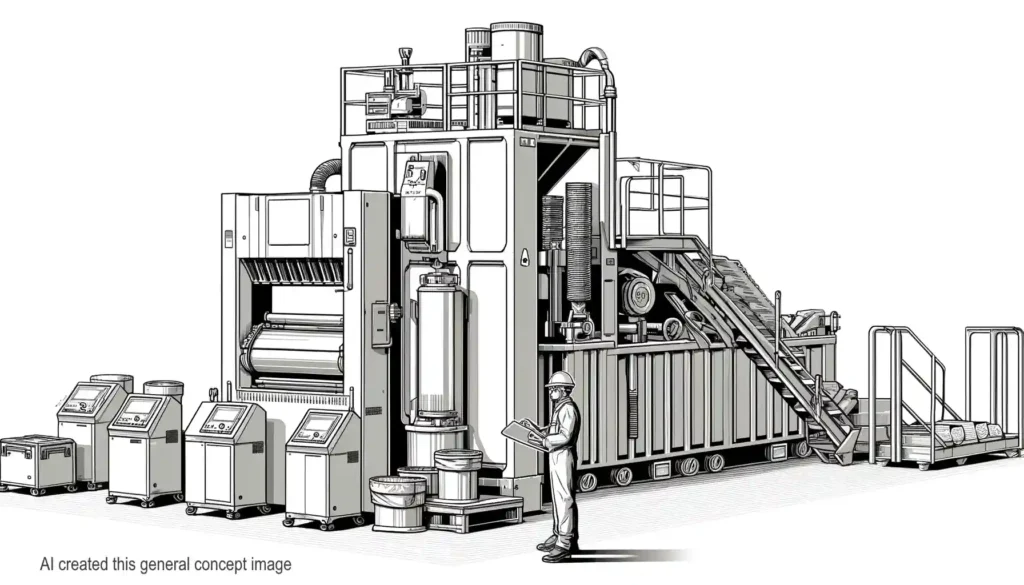This article is all about the equipment used to depackage food waste, and how to divert all organic waste away from landfill which is very important. Important, because organic waste in modern sanitary landfills produces the very potently damaging gas of methane in large quantities. As more and more nations develop landfills this gas is causing a significant impact on global temperature rises.
How to Depackage?
Whether you have a business or a home, there are many ways to divert food waste away from local landfill and it is important to do this, but first, it is necessary to depackage in order to separate the organic materials from the other things (known as rejects. By doing this, you can save your local council money/reduce your rates burden and also reduce your carbon footprint.
Depackaging Machines are machines used to take bulk food products and remove them from their packaging.

The most common type of Depackaging Machine is food depackaging equipment, however, there are other types as well such as the depackaging of electronics or other materials.
The Depackaging Machine industry is worth an estimated several billion USD and is growing at a rate of something like 5% – 10% per year.
The machines are used in a variety of industries, however, the most common use is in the food industry where Depackaging Machines are used to remove excess packaging from food products.
The machines are also used in the recycling industry where they are used to remove packaging from wastes high in organic materials such as food. materials.
Organic Waste and Plastic Recyclers
A growing industrial sector of recycling companies operates repackaging machines and food waste recycling companies are among those that divert food waste away from landfills. These organizations also work with a variety of groups to increase awareness about food waste, organics recycling, and composting. They may also provide technical support and contracting (waste collection) services for businesses seeking to recycle their own food waste.
For example, the Associated Recyclers of Wisconsin Organics and Composting Committee advises the organization’s organics programming. In addition, they provide training and education on food waste. They also encourage networking within the industry and encourage further research on organic recycling.
The state of Wisconsin generates 500,000 tons of compostable material annually. They also estimate that 1.2 million tons of materials could be diverted from landfills. The state DNR estimates that approximately 490,300 tons of recyclables will be generated in 2020.
Composting
Getting composting started in your community can benefit both your health and the environment. Composting helps to reduce the amount of waste going to landfills, which can lead to less greenhouse gases in the air. In addition, composting helps to improve soil structure, chemistry, and water retention in soils. Compost is also a great fertilizer for your plants.
In a recent report, the Institute for Self-Reliance described successful community composting programs and provided tips for launching similar programs. The report also noted the need for public support.
One way to get started is to purchase a compost bin for your home. If you do not have the resources to purchase one, you can get one through the RecyclingWorks in Massachusetts program. The program provides online guidance and case studies as well as a Find-A-Recycler database.
Organic Waste Bans
Across the United States, more and more states are enacting and implementing organic waste bans. These bans are designed to divert food waste away from landfills. They have the potential to drive recycling and drive businesses to adopt more sustainable practices. However, there are challenges to implementing and enforcing them.
One of the main challenges to implementing these bans is the lack of funding. Insufficient funding may limit the capacity to implement outreach programs or enforce the ban. The bans themselves may also have economic costs, such as increased hauling and tipping costs.
Another challenge is the lack of sufficient infrastructure to support organic waste bans. These bans can only be effective when businesses and other entities send their food waste to a processing facility. In many states, the infrastructure is not yet in place.
Donating to food banks and rescue programs
Having food waste diverted from landfills and distributed to food banks and rescue programs is one of the best ways to address food insecurity. In the United States, 72 billion pounds of food is wasted each year. This includes food that is not home-spun, such as food waste from restaurants, hotels, and food banks.
Food banks are community-based organizations that pick up donated food, store it, and distribute it to hungry people. Some food banks also work with soup kitchens, emergency food assistance agencies, and senior centers.
Food banks typically receive donated food from food brokers, grocery stores, and large manufacturers. For example, For example, Lunardi’s donates hundreds of dollars worth of bakery items to Second Harvest Food Bank each week.
Cost savings
Whether you’re a food service manager at a restaurant or a healthcare facility manager, cost savings by diverting food waste away from landfill are a great way to improve your bottom line. Not only will you save money on your waste management costs, but you’ll also make your staff more productive. And while you’re at it, you’ll improve the sustainability of your facility, reducing the odious trash odors that plague many neighborhoods.
According to Practice Greenhealth, a leading provider of environmental solutions for healthcare organizations, food waste represents 10 to 15 percent of the average hospital waste stream. Food waste can also account for losses at every step of the supply chain.
Sustainability
Getting food waste out of landfills is a key way to help the environment. It also helps feed families in need. In fact, if 25% of all food waste in the United States were diverted from landfills to compost facilities, greenhouse gas emissions would be reduced by 30%.
In 2000, about two percent of the 30,700,000 tons of food waste in the United States were composted. That number tripled over the next 15 years, and it is estimated that today (2022) about 10 percent of food waste is diverted.
The Food Recovery Challenge is part of the EPA’s Sustainable Materials Management Program, which helps reduce the environmental impact of materials. It works with businesses and communities to reduce food waste, recycle and donate food to charity. It offers technical assistance and data management software to participants. It also offers an annual climate profile report, which translates data on food diversion into greenhouse gas reductions.
Tags: How to divert food waste
Discover more from IPPTS Depackaging Equipment Insights
Subscribe to get the latest posts sent to your email.







